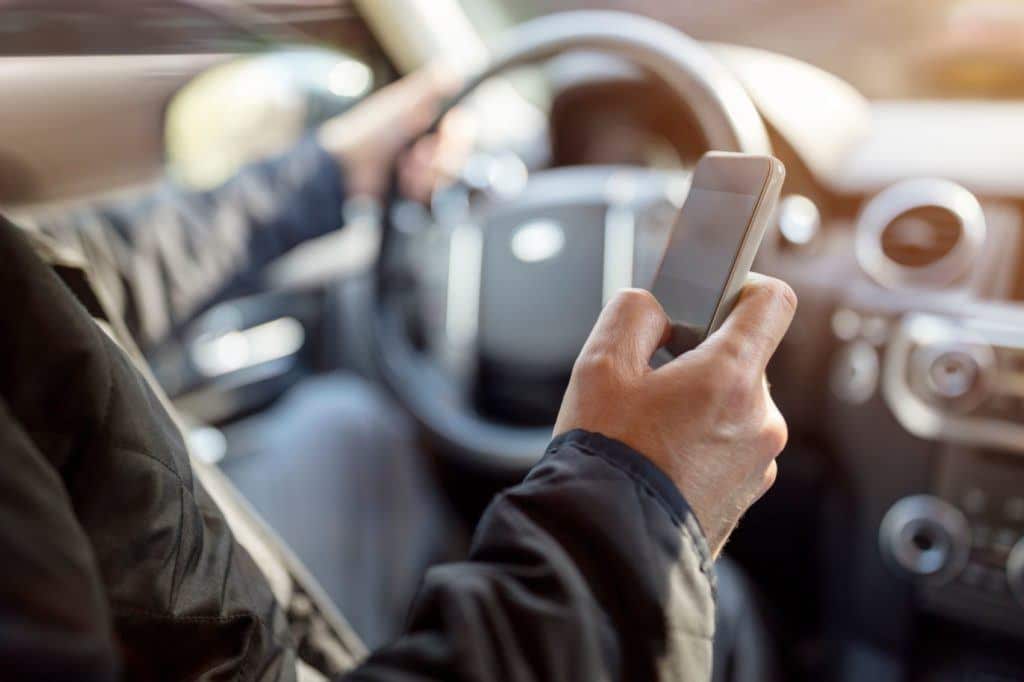A recent study sheds light on how parents drive alone versus when they are with their children. The National Safety Council (NSC), Cumberland Valley Volunteer Firemen’s Association, and the Emergency Responder Safety Institute conducted the study for Distracted Driving Awareness Month (April). The survey featured 1,000 adults age 25 and above who regularly drive with children.
Key Findings
Alone
Perhaps not surprisingly, the study found that parents drive differently when their children are in the vehicle. For example, while driving alone, parents were more likely to look away from the road to adjust different settings on the infotainment screen, like climate, audio, or navigation. About one-third say they will read a text, while more than half admit to regularly or occasionally talking on the phone while driving alone.
“In today’s electronic digital age, it seems impossible for some to resist answering phone calls, responding to text messages, or checking social media,” said Jim Flegel, Special First Lieutenant and Traffic Safety Specialist with the Michigan State Police. “Sending or reading a text message takes an average of about five seconds, which is enough to travel the length of a football field at 55 mph.”
With Children
However, when children are present, the study finds that nearly all (98 percent) adjust their driving behavior. In other words, parents are far less likely to pay attention to or be distracted by technology when their children are in the vehicle. Survey respondents overwhelmingly say they will ignore their phones and neglect popular connectivity features like navigation and music streaming if their children are with them.
“The harsh reality is that thousands lose their lives each year in crashes where distracted driving plays a role,” explained Lorraine Martin, President and CEO of the National Safety Council. “We should all drive as though we have a loved one in our car on every trip, every time.”
“Even just a brief moment of distraction can mean the difference between life and death,” Flegel added.

Do Age & Maturity Matter?
This study from NSC and its partners suggests a driver’s age and maturity play a role. Based on the data presented here, the average parent becomes more conscious as they have passengers. Contrast that to a recent study from The Governors Highway Safety Association and the Ford Motor Company Fund that determined risk factors for teenagers, such as speeding, increase exponentially with each additional vehicle occupant. According to that study, the fatal crash rate per mile driven for 16- and 17-year-olds is about three times the rate for drivers 20 and above.
A Growing Concern
Parents also shared their concern that speeding, distraction, and driver fatigue have increased to the point where roads are less safe than before the pandemic. The latest preliminary data, taken in November, confirms that survey participants are not imagining things. Even with less overall traffic, 2020 was, according to the data, a difficult year on American roadways. “It is tragic that in the U.S., we took cars off the roads and didn’t reap any safety benefits,” Martin said. “These data points expose our lack of an effective roadway safety culture.”
Although exasperated by the pandemic, there is evidence suggesting parents have always been worried about other drivers’ actions and how that impacts their children’s safety. A 2019 study from Harris Poll on behalf of Volvo Car USA, which mirrors this most recent survey from NSC and its partners, revealed several key points: first, that parents are unsure about which car seats are the best; that daily stress levels are higher than in years past, which affects how a person operates a vehicle; and that when they became parents, their view of driving changed dramatically (which reinforces the earlier observation about age and maturity).
“We have heard from new parents that they often felt overwhelmed with the information at hand when their first child is born,” said Jim Nichols, Product, Technology & Brand Communications Senior Manager for Volvo Car USA, when the study was initially released. “It’s also interesting that as cars have become safer over the years, parents feel that the road is now less safe than before.”
Making a Commitment
Survey respondents also shared their top deterrents when it comes to distracted driving. Being personally involved in a crash, having a “near miss” with another car, and losing a loved one in an accident were among the most common. However, the top deterrent was when a child tells a parent they feel scared because the parent is looking at their phone.
“Remember your children are watching and will be influenced by your driving decisions when they begin driving,” Flegel said. “The Michigan State Police urge all drivers to make the responsible decision: put your phone away and focus all your attention on driving.”
A full PDF version of this latest study, including additional findings not listed in this article, is available here from the NSC and its partners. Similarly, the NSC and its partners also offer a number of helpful resources on safe driving at work and in the community.


